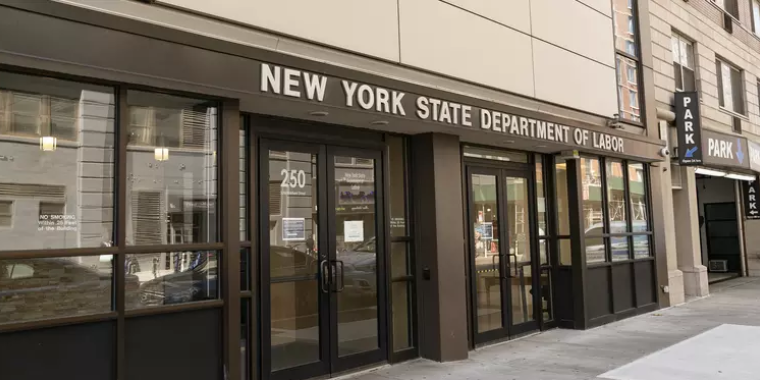
Making Home Ownership Affordable - Help Homeownership And Economic Stabilization For Long Island Program
John J. Flanagan
-
ISSUE:
- Housing
The purpose of the HELP pilot program isassist Long Island employers with retaining and recruiting qualified employees by providing those employees with the financial assistance needed to purchase and rehabilitate housing on Long Island. It will also encourage development in downtown areas and hamlet centers to improve the economic vitality within the community.
Most existing affordable housing programs limit participation to individuals and families with incomes 80%, or less, of the median. Unfortunately, Long Island’s median home price is now more than five times its median income. As a result, home ownership has become unaffordable for families at, or above, the region’s median income, yet they cannot qualify for existing programs. To address this problem, individuals and families earning up to 130% of Long Island’s median income qualify for HELP.
BACKGROUND
Recognizing that housing plays a critical role in the economic well-being of New York State, the current shortage of affordable housing, especially for younger working people and those now entering the workforce, is the single greatest threat to Long Island’s regional economy.
According to the 2000 U.S. Census, the number of 18 to 34 year-olds on Long Island decreased by 20 percent between 1990 and 2000. Moreover, a 2006 survey by the Long Island Index found that more than half of this age group has recently considered leaving Long Island, with an astounding 70 percent saying they are likely to leave within five years.
Clearly, as rising home prices continue to far outpace gains in wages, Long Island’s next generation is choosing to look elsewhere for a place to call "home". This dynamic not only tears at the fabric of communities by undermining the ability of Long Island families to stay together, but also stifles job creation as employers are confronted with a rapidly shrinking workforce.
In fact, both the business and labor communities on Long Island are united in their concern about the immediate and long-term impact of the "housing gap" on the region’s economic well-being. Many recent economic surveys show that businesses feel the number one obstacle to Long Island’s economic success is a lack affordable housing opportunities.
In numerous news stories published over the last year, major Long Island employers have spoken of thediminishing pool of new workers – especially skilled college graduates – with housing costs cited as the primary cause of what is now being termed Long Island’s "brain drain."
If this trend is not stopped and reversed, Long Island’s economy will soon face a lack of qualified employees to support its growing economic demands. Meaningful actions must be taken to ensure that Long Island communities remain strong and that its economy has the workforce it needs to drive future prosperity.
FUNDING
$25 million in Senate Majority Economic Development Funds
THIS FUNDING WAS SECURED BY SENATOR JOHN FLANAGAN
AND THE LONG ISLAND SENATE DELEGATION
PROGRAM ADMINISTRATOR
Long Island Housing Partnership (LIHP)
ELIGIBILITY
Applicants must have an annual income at or below 130% of the HUD median income guidelines based upon family size:
Family Size Maximum Allowable Income
1 $ 85,400
2 $ 97,500
3 $109,700
4 $121,950
5 $131,700
6 $141,450
7 $151,200
8 or more $160,950
PROGRAM COMPONENTS:
EMPLOYER ASSISTANCE HOUSING BENEFIT PROGRAM
An employer with one or more non-related employees who has or creates a recognized housing assistance benefit program as part of their employee benefit package may receive 3 to 1 state matching funds from HELP for each of their qualified employees.
Matching funds will be triggered by a minimum employer contribution of $3,000 per employee (businesses with fewer than 50 employees) or $5,000 per employee (50 employees or more). Employer contributions may not exceed a maximum of $10,000 per employee, for a total of $40,000 (employer + state). Funds will be provided at closing for down payment assistance on the purchase of a primary residence by an applicant.
Eligible housing for the employee would be any new or pre-existing single-family residences located within Long Island, to be occupied as a principal residence, including Condominiums, Co-operatives or Manufactured homes. Residences cannot contain any rental units. The appraised value of the property to be purchased must not exceed the median price of a home on Long Island (currently $450,000).
STATE HOUSING REHABILITATION GRANTS
In addition to the principal reduction assistance, homebuyers will be eligible to receive up to an additional $20,000 in funding to make any necessary eligible repairs if they are purchasing a pre-existing home. The LIHP will assist the homebuyer in determining the type and costs of repairs required, as well as provide them with assistance in selecting a licensed contractor.
HELP employer assistance benefits may be combined with existing employer assistance programs for qualified applicants.
SMART GROWTH DEVELOPMENT ASSISTANCE FOR WORKFORCE HOUSING PROGRAM
When a developer enters into an agreement with a municipality to build 5 or more workforce homes in downtown areas, hamlet centers or redeveloped properties in accordance with "Smart Growth" principles, and certifies such to the HELP administrator, the buyers of those workforce units can obtain a grant of $25,000 (per home) to be provided directly for down payment assistance, not exceeding $1,500,000 per development. Eligible housing for the "Smart Growth Development Assistance for Workforce Housing" is limited to those developments approved by the local municipality to provide home ownership opportunities to those who meet the workforce housing criteria – the sale price of each unit may not exceed three times the median income on Long Island for a family of four, which currently amounts to $273,000.
"Smart Growth" development may include, but is not limited to, one or more of the following components: mixed-use development to increase economic activity in downtown areas or hamlet centers through the integration of commercial and residential land use; location near transportation hubs to utilize existing infrastructure and create "walkable" neighborhoods; compact building design as an alternative to conventional, sprawling development; and inclusionary zoning to create a range of housing opportunities.
Development must be located within Long Island, occupied as a principal residence which are single family dwellings including Condominiums, Co-operatives or Manufactured homes. Residences cannot contain any rental units.
This benefit may not be combined with HELP Employer Assistance.
Example of HELP Employer Assistance Benefit
This example illustrates how HELP would assist a typical Long Island family.
Even with a household income of $110,000 (120% of median) and $30,000 saved for down payment and closing costs ($20,000 down, $10,000 closing costs), this family can not afford a house priced at $440,000, or just below median.
With taxes at $6,000 annually, homeowners’ insurance at $1,200 annually and a 30 year fixed-rate mortgage at 6.5%, their monthly PITI payment (principal, interest, taxes and insurance) would be $3,255. This exceeds the 35% of gross income threshold to qualify for, and maintain, a mortgage.
However, with a $5,000 employer contribution under HELP, this family can add $20,000 ($5,000 employer + $15,000 state) to their down payment, bringing their monthly payment down to $3,128, which would qualify them for this home.
PLEASECLICK HERETO VISIT THEHELP PAGE ON THE LONG ISLAND HOUSING PARTNERSHIP WEB SITE FOR MORE INFORMATION
TO SEND AN E-MAIL TO SENATOR FLANAGAN, PLEASE CLICK HERE.
IF YOU WOULD LIKE TO RECEIVE REGULAR UPDATES FROM SENATOR FLANAGAN, PLEASE CLICK HERE.



